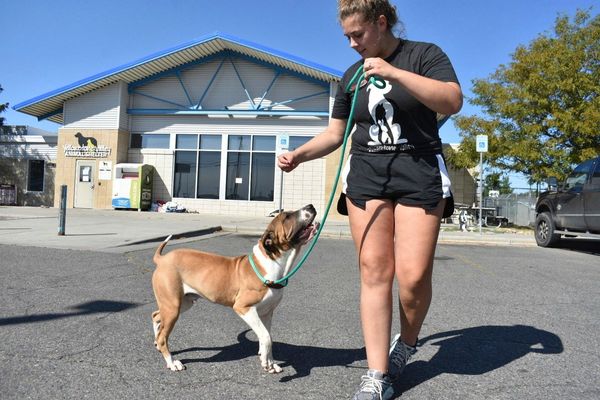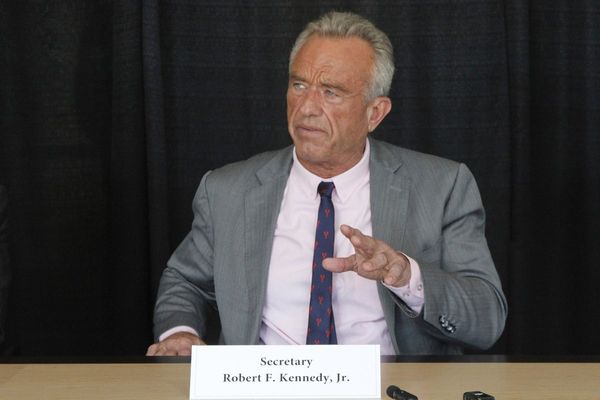
Marc Quinn, artist
Around 1999, I started making sculptures of people with differently shaped bodies. I wanted to celebrate a different kind of beautiful, a kind of body other than what you normally see in art. I approached the British Paralympic Association and through them contacted Peter Hull [the British swimmer and Paralympic gold medallist] and made a sculpture of him. Pete was a friend of Alison Lapper and he put me in touch with her. By the time she agreed for me to sculpt her, Alison was pregnant with her late son Parys. I thought: “Wonderful! Pregnancy is about the future!” I thought the sculpture could be a monument to the future, when a great deal of sculpture is a monument to the past.
Alison came to my studio and we made a cast of her which gave the basic form. We took measurements and photos – we were creating a kind of 3D sketch. But the point of the sitting was to get a sense of how she sits and her spirit. It took about four hours, which was very demanding on her. I can’t remember if there was music playing, but I do remember we were chatting the whole time.
Between the initial sitting and the final sculpture there was a lot of work, sourcing the marble in Carrara, Italy, and so on. So much so that by the time Alison came to see the final sculpture, Parys was three, I think. It was exhibited at the White Cube in London and a gallery in Germany and was well-received.

Then all hell broke loose when we applied to have the sculpture on the fourth plinth in Trafalgar Square. Alison Lapper Pregnant was unveiled on 15 September 2005. It was 13 tons and 3.5 metres high. We got a lot of flak, to put it mildly, from it being called “patronising” to “ghastly”. But I think it was, and remains, incredibly subversive. Every other statue in that part of London is of a dead bloke who conquered the world. And here, instead, was a living woman looking to the future and kicking arse.
It was up there for two years, a year longer than usual since the next sculptor hadn’t finished their piece on time. Since then, it has been looking for a home. Every organisation we approached in New York, because a lot of public squares in the city are privately owned, said no. They didn’t want to be associated with something so controversial. We’re looking for the right place to put it permanently. This artwork needs to live in public.
The idea was to be part of the world and part of how people think in the time you live in. That’s all you can do, isn’t it? If Alison and I changed the world a little, that’s great. In 500 years, people will be looking at this sculpture and they will know it was of Alison but not who made it. Alison is immortal in that sense – what she represents will live beyond both of us.
Alison Lapper, artist and model

In the beginning, I didn’t understand what Marc was trying to do, so I said no. Then a year later he called and I told him I was pregnant – it was almost as if he dived down the phone. One of the reasons we are probably still friends and working together is because I realised that to have a sculpture made of me while pregnant, that will exist longer than I’m going to be here, is great. It’s going to outlive me and it has already outlived my son, Parys.
I sat on the table in Marc’s studio for four hours. He literally had to hold me up towards the end because I was so tired – I’m not good at sitting without support. For me, it was about capturing that moment in time when I was pregnant, knowing that I would probably never be pregnant again. It wasn’t awkward to chat to Marc while I was naked. I’m very comfortable in my own skin.
When it was first announced that the sculpture was going on the fourth plinth, I was slated. The Sun wrote about “Travulgar Square”. It was awful. People are less obviously rude today but the same judgments are there. I’m making a documentary at the moment using archive footage of when I was a child, and the so-called professionals talked about us as “limbless babies”, as if we were broken and not complete. Most people think all disabled people are a drain and burden on society. People think I am completely useless. But I can do anything or go anywhere. I open my mouth and they fall over. When they find out that I drive a car, I work, I’ve got a mortgage and had a child, it blows their minds.
This sculpture gave me a voice for the first time and maybe it did the same for others who have different bodies. I was up there, a pregnant, naked, disabled single mother. Marc couldn’t really have picked any better.
I look at the sculpture and it makes me smile, because I was told I could never have a child. People were writing to the papers going: “It’s disgusting that people like that should be allowed to get pregnant.” Excuse me?
Parys died four years ago from mental health and drug problems, which, despite what they say, go hand in hand. How can you explain what it’s like to lose a child? He was the most precious human to me in the whole world. I would have given up anything for him, done anything for him. I took photographs of my dear son and used them as the basis for paintings and portraits of him when he was very ill and when he died. I painted his portrait, with me kissing his forehead, to go into the exhibition that Marc and his team have helped me organise. It tore me apart, because I had to stare at this scene for weeks and weeks on end.
If you want to challenge me, bring it on, because all I’m doing is trying to portray the feeling of grief and loss in a way that many people, for whatever reasons, don’t understand. In the same way that the sculpture of me was looked at as horrific in the beginning, some might find it horrific that my dead son is on these canvases. So criticise if you like, but I’ve been brave enough to go, “Right, this is the most painful thing to do. But I’m going to follow through and do it.” And I have.
• Alison Lapper’s exhibition Lost in Parys is at Bethlem Museum of the Mind, Bethlem Royal hospital, Beckenham, Kent, from 7 February to 1 June.







